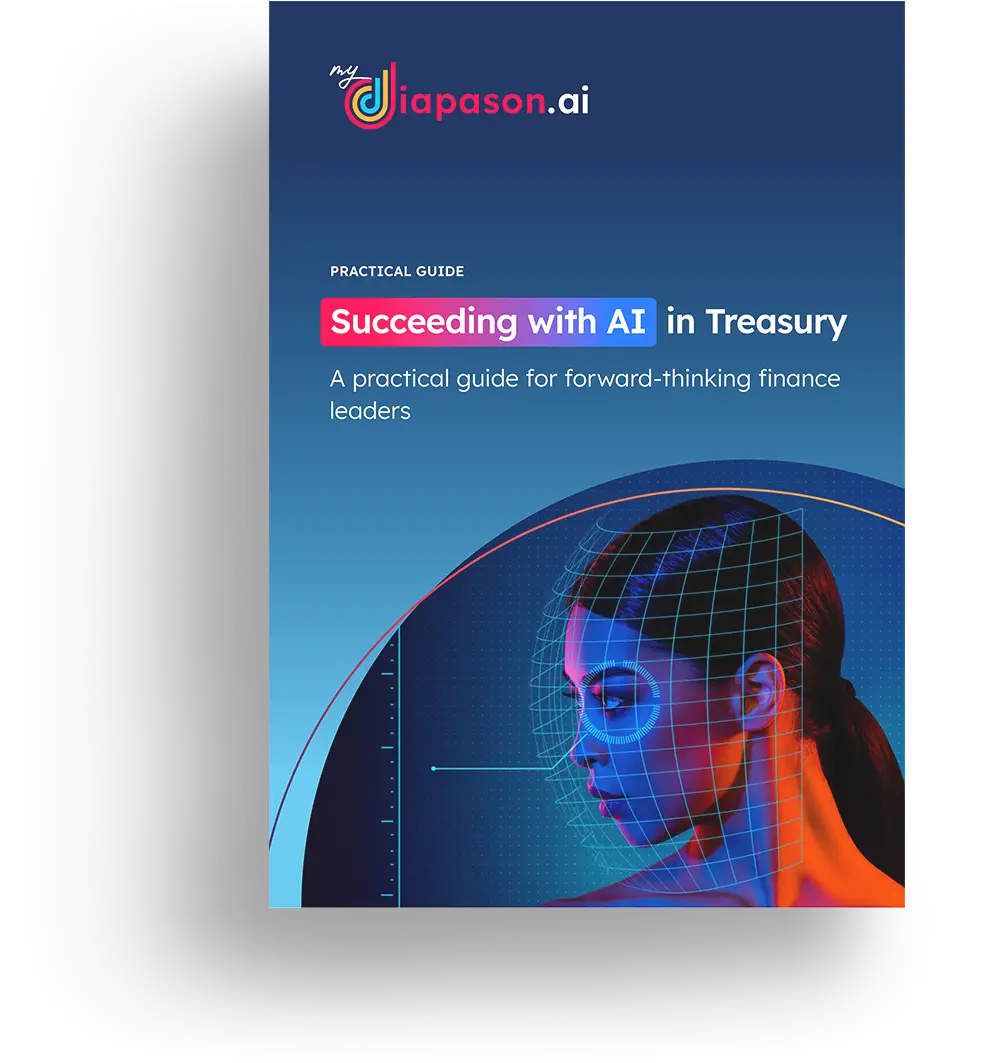Cash flow management is a strategic priority for corporate treasurers. Having an accurate view of future cash flows enables informed decisions regarding financing, investments, and risk hedging. The ability to precisely anticipate liquidity needs and identify optimization opportunities is essential for effective financial resource management. In this context, Artificial Intelligence (AI) emerges as a powerful ally for enhancing your financial processes and cash flow forecasts.
Why Can AI Help Treasurers with Their Cash Flow Forecasts?
AI is steadily making inroads in many areas of finance, and treasury management is no exception. Traditional methods, although effective under certain circumstances, have limitations when it comes to anticipating complex market fluctuations or handling large volumes of data. Thanks to its advanced data processing and machine learning capabilities, AI can address these challenges head-on.
AI-driven predictive models in finance use historical data and sophisticated algorithms to analyze behavioral patterns, predict trends, and adjust forecasts in real time. This not only boosts the accuracy of cash flow forecasts, but also uncovers anomalies or opportunities that traditional approaches might miss.
Far from being just a passing trend, AI is becoming an essential tool for treasurers looking to modernize their methods and better manage the ebbs and flows of cash.
The Importance of Data Quality for AI
While AI represents a significant leap forward in cash flow forecasting, its effectiveness relies heavily on the quality of the underlying data. Even the most advanced algorithms cannot compensate for incorrect or incomplete information. Therefore, before reaping AI’s benefits, it is crucial to implement rigorous data governance.
Treasurers must ensure that the financial data they collect is not only accurate, but also well-structured and relevant to their forecasting needs. This includes factoring in external variables that can affect cash flow, such as exchange rate fluctuations, global economic conditions, and sector-specific business cycles.
High-quality data is clean, standardized, and properly integrated into information systems. Treasurers should therefore invest in tools and processes capable of collecting, cleansing, and analyzing this data. In doing so, AI-based forecasts gain both reliability and relevance.
The Benefits of AI for Cash Flow Forecasts
Integrating AI into treasury processes offers numerous advantages:
Greater Forecast Accuracy
By analyzing large data sets and identifying patterns, AI improves the reliability of short-, medium-, and long-term cash flow forecasts.
Time Savings
Automating data collection and analysis drastically reduces the time required to obtain cash flow forecasts.
Risk Reduction
AI can detect anomalies in financial flows, allowing treasurers to respond quickly to unexpected variances or potential risks.
Real-Time Adaptation
Unlike static methods, AI can adjust forecasts based on ongoing events, providing unparalleled flexibility in treasury management.
Identifying Optimization Opportunities
AI can help spot ways to enhance cash flows—for example, by suggesting adjustments to payment terms or optimizing the use of available resources.
AI and Treasury Management at Diapason
At Diapason, we’ve developed a dedicated AI module for cash flow forecasts within our treasury management software, designed to meet the needs of companies looking to maximize the accuracy and efficiency of their financial forecasts.
Our AI leverages proven predictive models, backed by months of rigorous testing and real-world data analysis. As a result, we offer a solution that significantly enhances your liquidity forecasts by accounting for both internal and external variables.
With our solution, you benefit from a clear, real-time view of your cash flows, enabling you to anticipate financing needs, better manage risks, and optimize the use of available resources.
About the Author
Valérie Lafaury, Chief Marketing Officer
Valérie is the Chief Marketing Officer (CMO) of Diapason, the solution that streamlines corporate treasury management. She crafts press releases, in-depth articles, and timely pieces on topics related to the treasurer’s profession. Her goal is to provide treasurers with useful and practical information to optimize their treasury management.








